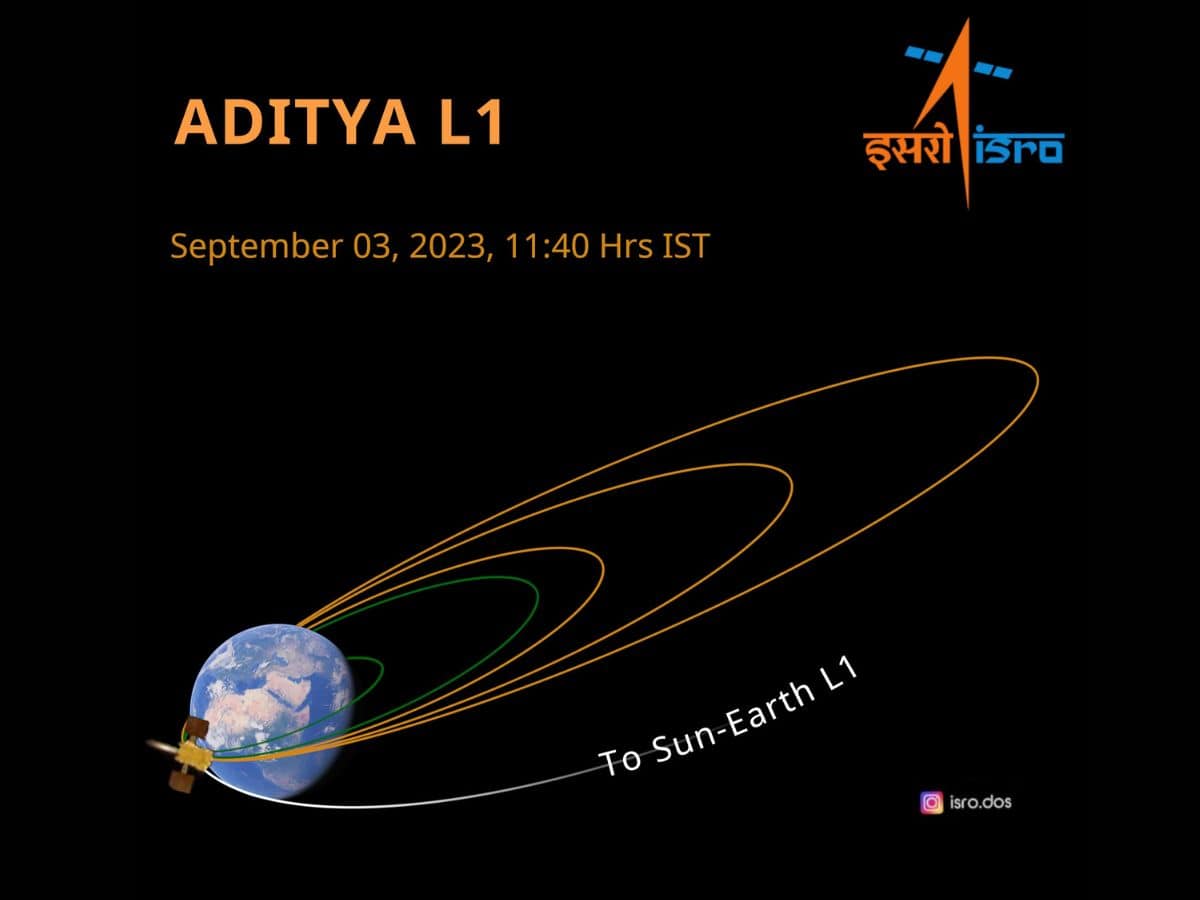
New Delhi: Aditya-L1 spacecraft which was lifted successfully to study the Sun made its first earth-bound manoeuvre on Sunday.
ISRO in its latest update said the satellite is “healthy and operating nominally” and the next manoeuvre is scheduled for Tuesday at 0300 hrs IST.
Shifting the focus to its next space odyssey after successfully placing a lander on the moon’s uncharted South Pole region, the Indian Space Research Organisation (ISRO) launched from Sriharikota on Saturday the country’s maiden solar mission — Aditya-L1.
It carried seven different payloads to have a detailed study of the sun, four of which will observe the light from the sun and the other three will measure in-situ parameters of the plasma and magnetic fields.
Aditya-L1 will be placed in a halo orbit around Lagrangian Point 1 (or L1), which is 1.5 million km away from the Earth in the direction of the sun. It is expected to cover the distance in four months’ time.
Aditya-L1 will stay approximately 1.5 million km away from Earth, directed towards the Sun, which is about 1 per cent of the Earth-Sun distance. The Sun is a giant sphere of gas and Aditya-L1 would study the outer atmosphere of the Sun.
ISRO said Aditya-L1 will neither land on the sun nor approach the sun any closer.
This strategic location will enable Aditya-L1 to continuously observe the sun without being hindered by eclipses or occultation, allowing scientists to study solar activities and their impact on space weather in real-time. Also, the spacecraft’s data will help identify the sequence of processes that lead to solar eruptive events and contribute to a deeper understanding of space weather drivers.
Major objectives of India’s solar mission include the study of the physics of solar corona and its heating mechanism, the solar wind acceleration, coupling and dynamics of the solar atmosphere, solar wind distribution and temperature anisotropy, and origin of Coronal Mass Ejections (CME) and flares and near-earth space weather.
On August 23, India took a giant leap as the Chandrayaan-3 lander module successfully landed on the moon’s South Pole, making it the first country to have achieved the historic feat and bringing to an end the disappointment over the crash landing of the Chandrayaan-2, four years ago.
Overall, India became the fourth country – after the US, China, and Russia – to have successfully landed on the moon’s surface.
After having landed, the Vikram lander and the Pragyan rover performed different set tasks on the lunar surface, including finding the presence of sulphur and recording relative temperature.
Upon landing, the lander and the rover were to operate for one lunar day. One day on the Moon is equal to 14 days on Earth.
On Saturday, ISRO said the Pragyan rover completed its assignments and is now safely parked and set into “sleep” mode.
“Currently, the battery is fully charged. The solar panel is oriented to receive the light at the next sunrise expected on September 22, 2023. The receiver is kept on. Hoping for a successful awakening for another set of assignments! Else, it will forever stay there as India’s lunar ambassador,” ISRO said.



